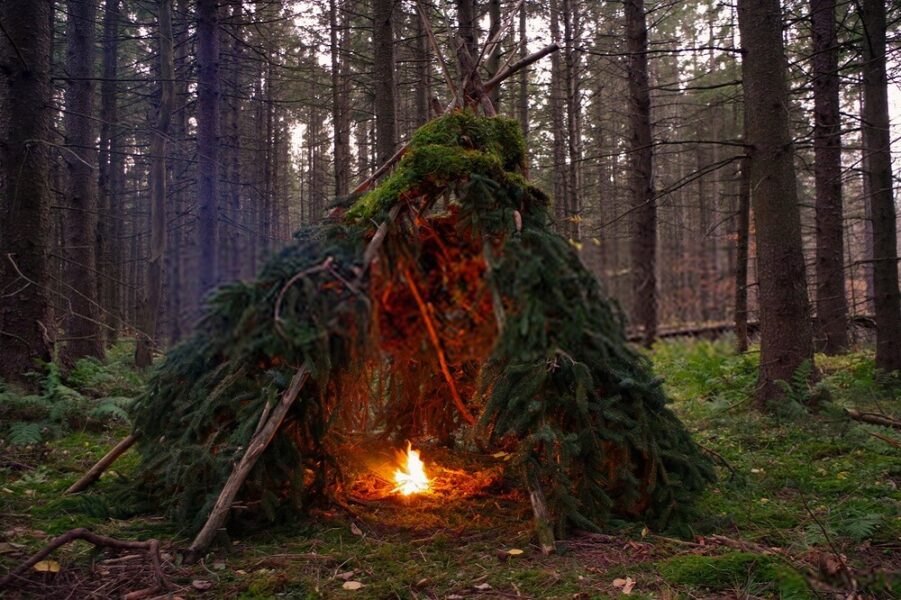Take advantage of the warmer months and practice your outdoor skills by learning how to build a survival shelter in the wild. Knowing how to make this kind of shelter is vital in survival situations. Here we are going to look at multiple designs for survival shelters, as well as guide you on choosing the right materials and locations for the best results.
How To Choose The Best Location?
You will have to choose a location based on how long you plan to use it. Short-term shelters will need to be placed differently than longer-term ones.

For a short-term shelter, look for fallen trees, caves, or rocky overhangs. Trees are an idea and can provide the materials you need to build them.
If you know you will need shelter for a longer period, there are many more factors you need to consider. You want to be near food and water sources. Another thing to consider is whether you want to be visible or hidden.
What Are The Different Kinds Of Shelters?
Here are some of the different types of survival shelters which we will be exploring in more detail below:
- Frame and tarp shelter
- Body heat shelter
- Lean-to or open shelter
- A-frame shelter
- Teepee shelters
- Subterranean shelter
- Log cabin for long-term shelter
Frame And Tarp Shelter
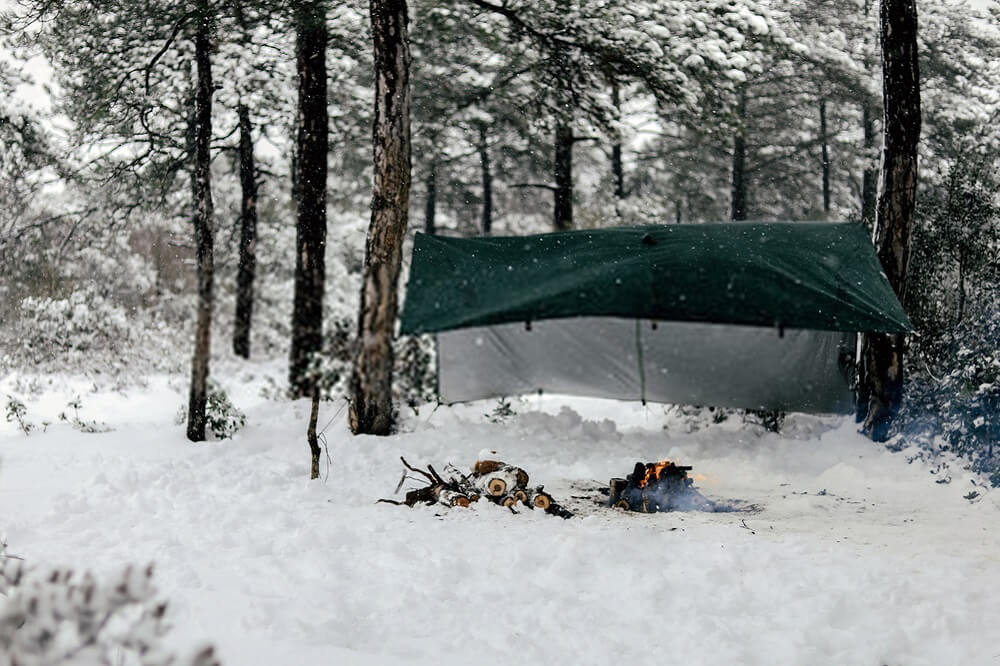
One of the best things you could ever carry in your survival backpack is a tarp. If you are well prepared, you can use your tarp and a simple wooden frame to create a shelter for short-term survival. Creating a frame is easy. All you need to do is lean the poles against a tree trunk or low branch so the tarp will fit over it.
An important thing to remember about this kind of shelter is to remove sharp edges from the wood. You may also want to wrap leaves around the corners, so the tarp doesn’t get ripped or punctured. In a real emergency, you can forget about the poles and wrap yourself in the tarp as a quick makeshift shelter.
Body Heat Shelter
Another short-term and easy-to-build shelter is one made specifically for retaining body heat. They are great for emergencies and can comfortably accommodate one or two people.
To begin building a body heat shelter, you need to find debris on the ground, like leaves, dirt, and twigs. Create a mound out of this debris and then use larger sticks to frame it. Now clear a hole in your mound that is big enough for you to crawl into, sort of like a cave. Block the opening so that airflow is limited to keep the warmth in. When your body emits heat, the warmth gets trapped inside and will keep you cozy through the night too.
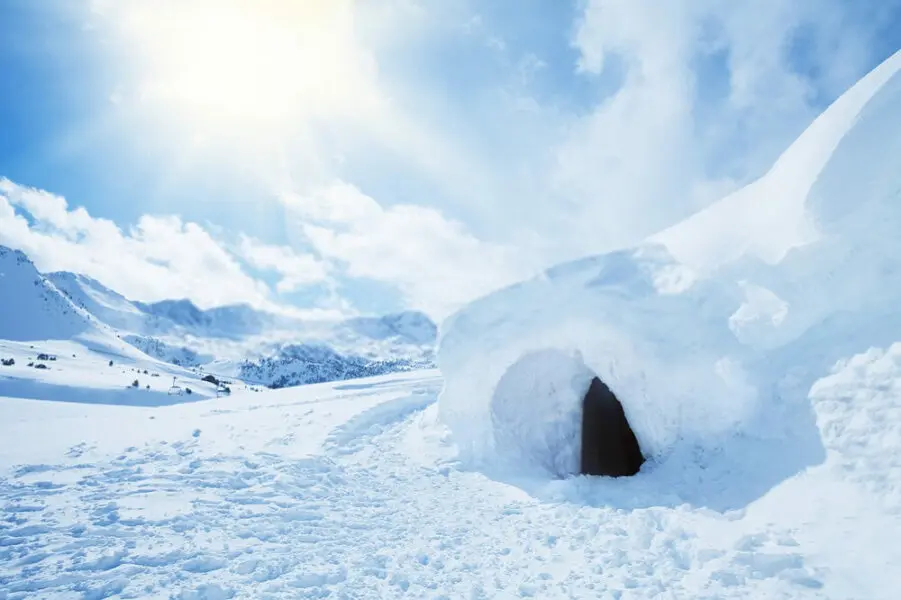
You may be thinking about wintery weather and what you would do with this shelter in the snow. That’s easy! If the ground is covered in snow, then use that to build your mound instead. Snow may be cold, but it is an excellent insulator against the outdoor elements and will trap your body heat just as effectively.
Lean-To Or Open Shelter
Open shelters and lean-tos have the added advantage of protecting you against rain and wind and can fit up to four people. Building this type of shelter could take anywhere from two to five hours, depending on what supplies you have on hand.
To start building a lean-to, you need to look for downed trees. The branches must be low enough to support the top of your shelter. Then you will need around five or six poles to lean against the top support of your shelter, aka the branch. The poles need to be placed at 45-60 degree angles, creating enough space to fit your team and any gear you have underneath it comfortably.
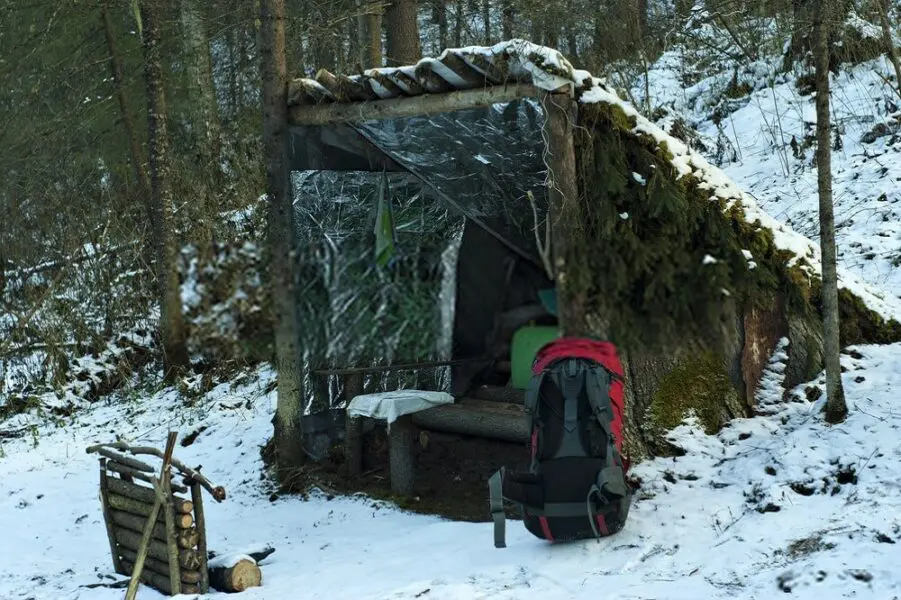
The next step is creating your grid. Get 5 to 6 more poles and place them across the frame. You can even add leafy branches to form a sort of thatch roof for your shelter as well. Walls can also be added in for extra protection against the elements. Tarps and blankets can also be hung from the door as a curtain for privacy.
A-Frame Shelter
A-frame shelters are made in a similar way to lean-tos. The main branch you use as your top support will need to lie on the ground and extend into a tree. You then attach poles to the support branch in a way that gives you enough height to sit underneath it.
Teepee Shelters
Teepees have the advantage of not needing a downed tree. They can stand alone or use the help of a tree trunk for construction. It can be easier to use a slender tree as the central support of your tepee, attaching the rest of the poles around it to create a cone shape to shelter under.
How you build your tepee will depend on what you are using the shelter for. You could close the roof completely or leave a gap for ventilation if you plan to use fire inside.
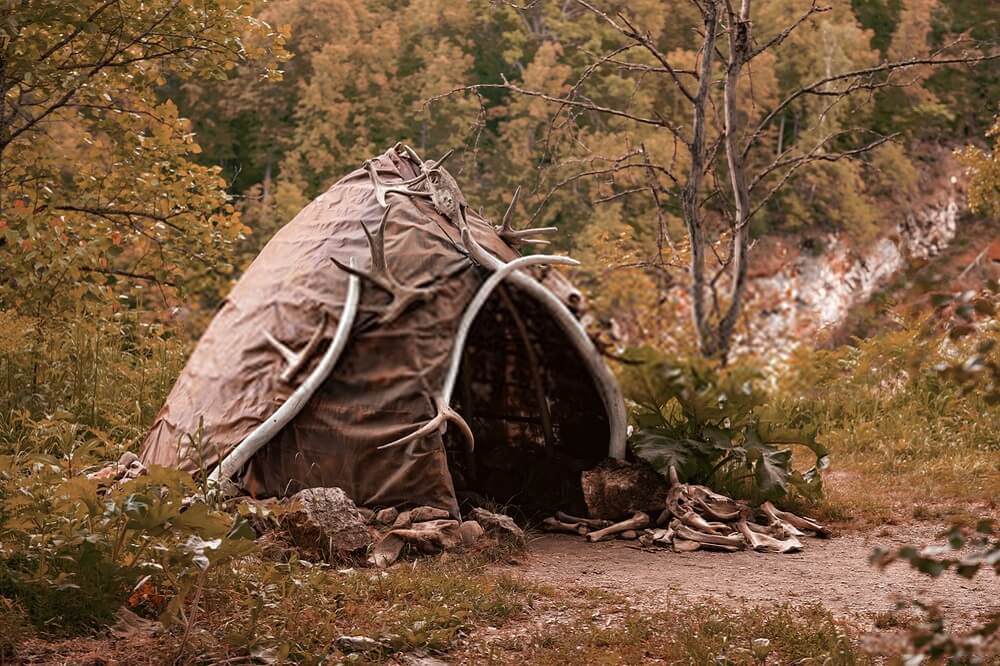
Once you have a sturdy frame constructed, you can fill in the gaps with whatever materials you have on hand. This could be leaves, mud, or grass. Placing these outside your shelter will stop rain from leaking into the structure.
Subterranean Shelter
Subterranean shelters can be a short-term shelter solution built from a mound of earth, much the same as a body heat shelter. The best place for this kind of shelter is around the roots of fallen trees so that the mound has more support to stop cave-ins.
This kind of shelter can also be built for the long term, but it will require some careful planning on your part. A shelter like this would be something you build in advance for SHTF situations instead of building it in the wild when you are already in a survival predicament.
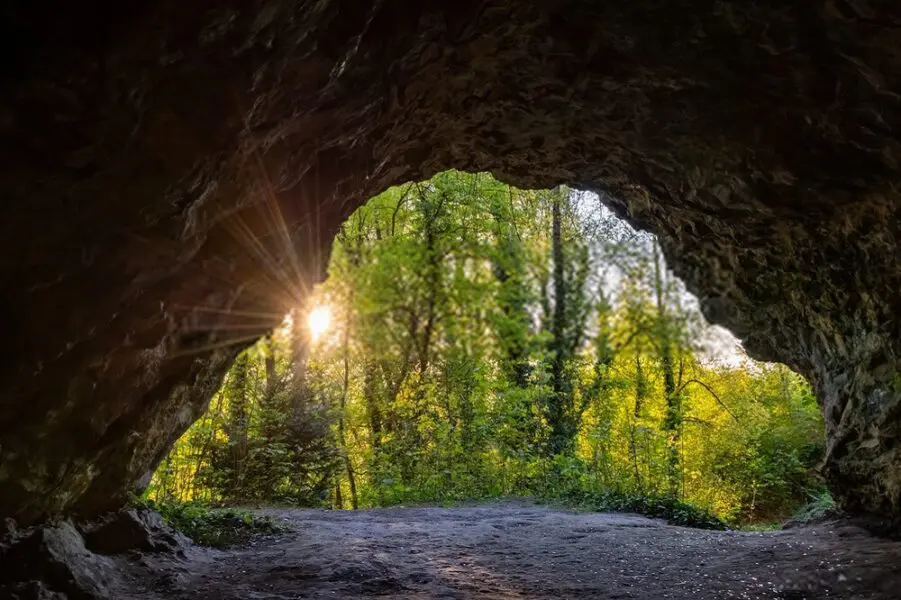
Any survivalist who wants to build one of these structures has a lot of different designs to choose from. The most extreme ones are completely kitted out with their power supplies, home comforts, and even functioning systems for defense.
Log Cabin
If a disaster brings an end to the world we know, you may want to understand how a long-term shelter can help you survive. Log cabins are dependable and solid and are built using the materials that surround them. It takes a long time to build, and the resources and energy are in spades.
Log cabins are built using a framework of logs that interlock at the corners, forming a rectangle. The ground you choose to build on must be clear and level. You may also want to place large rocks before starting your construction so that the cabin is off the ground a couple of feet.
What Tools Do I Need?
Tools and materials should be a big part of your survival backpack gear. Certain tools are a must-have when you need shelter in an emergency.

To make sure you have all of the tools needed to survive out in the wild, think about what tasks you will be doing as part of building a shelter. De-branching, notching, cutting, lashing, weaving, and digging all require tools that can easily be carried in your pack.
Here is a list of the best survival supplies you should have on hand to build any type of shelter out in the wild:
- Fixed blade knife – Can be used for cutting cords and small branches, removing bark from poles and logs, and notching poles for a secure fit before lashing.
- A Multitool – Can be used for sawing through smaller branches, filing down sharp corners to stop tarps from tearing, removing splinters, and loosening knots in cords.
- Hatchet – Can be used for cutting and debranching larger trees, cutting down trees when building a log cabin, and preventing your knife from dulling.
- Folding shovel – Can be used for clearing the ground before building your shelter, digging in the snow or dirt to build a body heat shelter, leveling out the ground for your support poles, or excavating large rocks to make stilts from.
- Tarp – Can be used as a door or roof for any shelter, wrapping around you and your gear for protection and warmth in inclement weather or making a sling to store your supplies off the ground.
- Blankets – Can be used as a roof or door for your shelter, wrapping around you for extra warmth, or for making a sling for supplies, so they are protected from wildlife above the ground.
- Cords and ropes – Can be used for lashing poles together to create the framework of the shelter and many other applications.
- Zip ties – Can be used for attaching smaller branches and poles, fastening your tarp to the top of your structure to create a barrier from the rain, or substituting for the rope when doing light construction.
- Gloves – For protecting your hands as shelter building is hard work.
- Lighter – Fire can be used to melt the ends of your cords and rope so they won’t fray and cause instability for your shelter.
Precautions To Take
No matter where you have chosen to place your shelter, you must always be conscious of the wildlife around you. The land should be surveyed before any shelter is built so that dangers such as snakes can be removed beforehand.

Leaf piles and bushes are where creatures will be hiding the most. Using a stick, gently prod any piles before exploring further with your hands. Stored food should also be tied up and then hoisted into a tree. This will stop creatures from being attracted to your shelter.
Foliage is something else you need to pay attention to when building a shelter out in the wild. Any that has a chalky white color to it is moldy, which could then spread throughout your shelter and significantly impact your health. Trees that contain a lot of lacey leaves should also be avoided, as this is a sure sign of insect infestation.
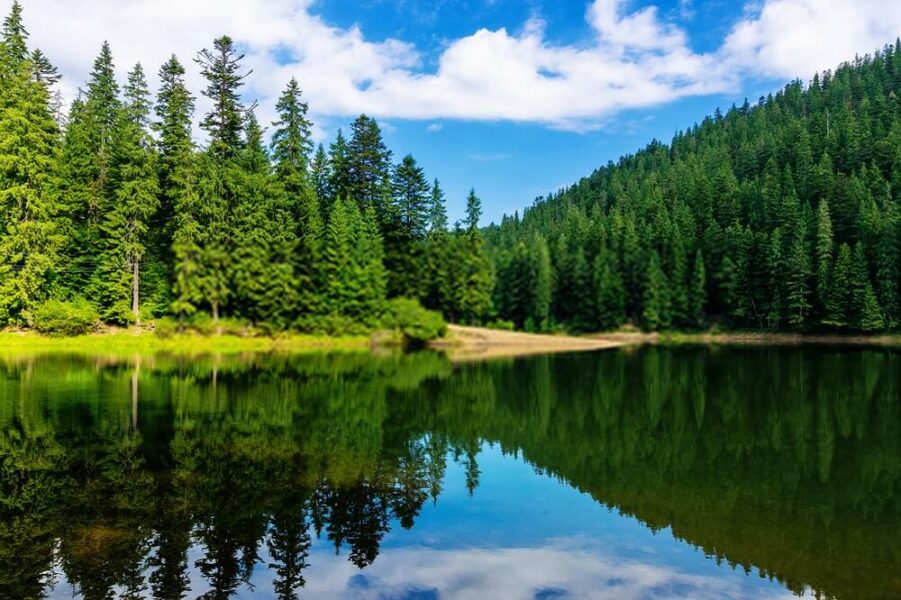
What Precautions To Take When Building A Shelter?
Leaf piles and bushes are where creatures will be hiding the most. Using a stick, gently prod any piles before exploring further with your hands. Stored food should also be tied up and then hoisted into a tree. This will stop creatures from being attracted to your shelter.
Foliage is something else you need to pay attention to when building a shelter out in the wild. Any that has a chalky white color to it is moldy, which could then spread throughout your shelter and significantly impact your health. Trees that contain a lot of lacey leaves should also be avoided, as this is a sure sign of insect infestation.
What Is A Subterranean Shelter?
Subterranean shelters can be a short-term shelter solution built from a mound of earth, much the same as a body heat shelter. The best place for this kind of shelter is around the roots of fallen trees so that the mound has more support to stop cave-ins.
This kind of shelter can also be built for the long term, but it will require some careful planning on your part. A shelter like this would be something you build in advance for SHTF situations instead of building it in the wild when you are already in a survival predicament.
Summary
Contents
Now that you know the basics of planning and building your shelter, the next step is to have a go and practice constructing one for yourself. Skills such as lashing and weaving can be practiced in your garden.
When building a shelter in the wild, you need to get out there and get some real-world experience. Take note of all the factors involved, such as the materials you needed most and how long the overall build took. Knowing these things can be a life-save in any disaster scenario.

